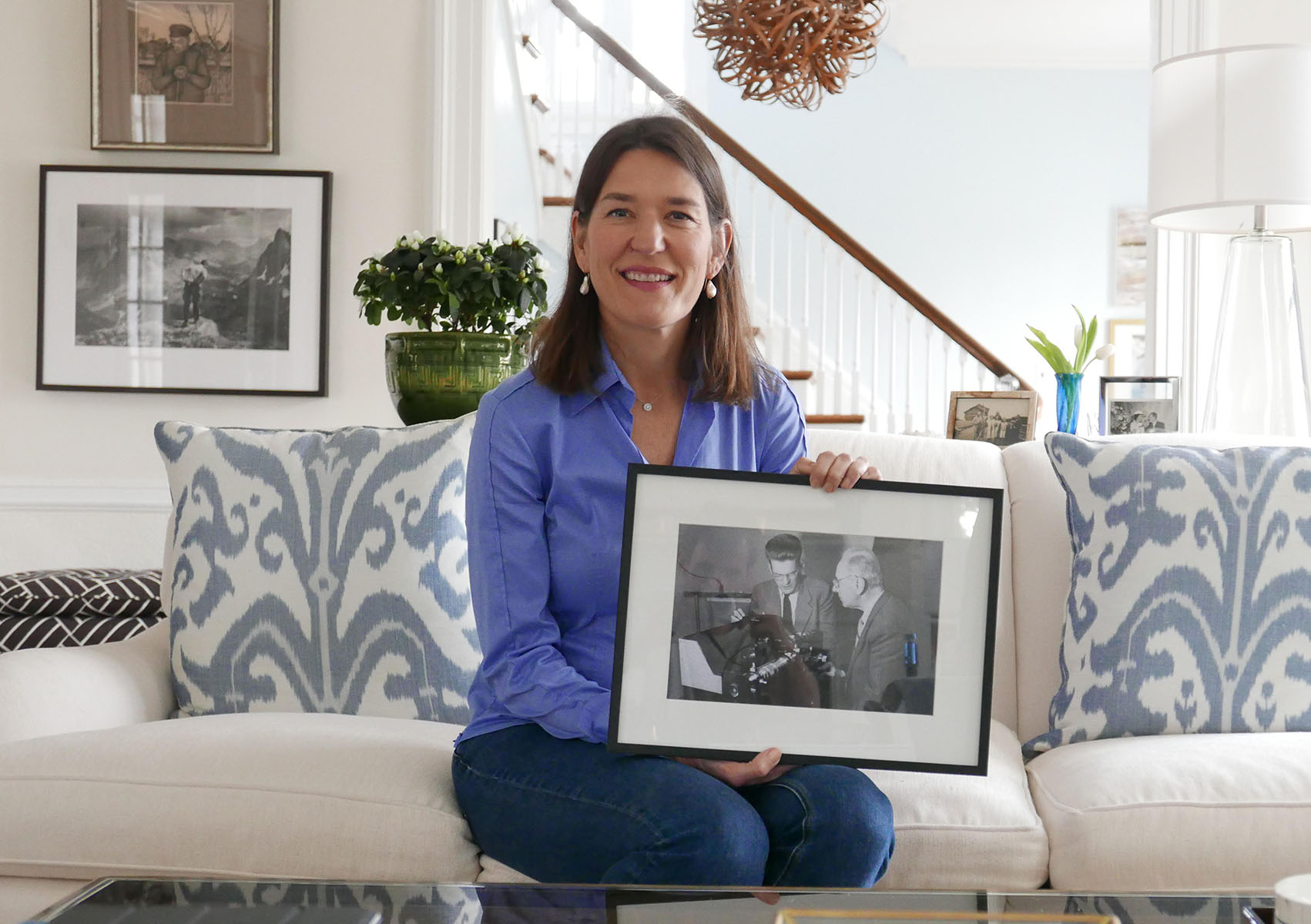Kate Zernike: ‘We have to talk about ourselves more’
The American Kate Zernike (1968) – yes, the granddaughter of infamous UG alumni Frits Zernike – is a writer and a journalist at The New York Times. She has won several journalistic awards and is currently writing a book on women in science. At the UG’s international anniversary lustrum conference in June she takes part in a conversation about journalism and diversity. Zernike also gives the lecture Woman in science during the celebration of the 100th Rosalind Franklin Fellow scientist at the University of Groningen.
Text: Larissa Pans
Five years ago, Kate Zernike was invited to Groningen (‘A beautiful homecoming’), and was shown around the building named after her famous grandfather, physicist and Nobel Prize winner Frits Zernike (1888-1966). ‘My sons were allowed to look through his microscope; they loved that.’ Although her grandfather and father, Frits Jr., were both physicists and worked at the University of Groningen, Kate had no aspirations to follow in their scientific footsteps. She became a journalist, and now writes for The New York Times on politics and published a well-researched, critically-acclaimed book on the Tea Party: Boiling Mad: Inside Tea Party America. ..

Chocolates
Kate’s father left Groningen at the age of 26 and emigrated to the United States. ‘To integrate in his new country, he read The New York Times from the moment that he arrived,’ says Kate. Her Canadian mother, who founded an ice cream factory, passed on to her children the Dutch traditions of chocolate sprinkles, poffertjes and a chocolate letter for Sinterklaas. She laughs: ‘And probably I owe my directness as a journalist to my Dutch genes.’ Her lecture during the anniversary celebrations will focus on inclusivity, ‘a broad concept, and an eye-opener for me. When I think of my grandfather – like when I’m writing my book about female scientists – I think about something a UG employee once told me: when my grandfather won the Nobel Prize in 1953, he gave out chocolates to everyone in his laboratory. He really believed that the prize wasn’t just for him, but for all his employees. The Nobel Prize is an individual prize, however it is rarely achieved through the work of a single person. Sharing and contributing ideas... you do research together. Yet only one person gets all the credit.’
Equal partners
In retrospect, Kate’s theory turns out to be excellently illustrated by the story about Caroline (Lily) Bleeker (1897-1985). This woman received her doctorate with honours in Mathematics and Physics under the supervision of Zernike’s colleague Leonard Ornstein. She was a brilliant instrument maker – who went on to set up her own instrument-making company – and together with Zernike, she developed the famous phase-contrast microscope and later commercialized it. Kate Zernike is amazed by this story: ‘Wow, a female entrepreneur and scientist in those times, and who worked so closely with my grandfather! I didn’t know that, but I always heard that he saw women as equal partners in science. I’m convinced that women’s contributions are undervalued, both now and in the past. In all kinds of sectors, such as politics, science and journalism. We need to be more open when it comes to thinking about the way that things are brought together, unravel the chain of people who have all used their talents, which ultimately led to a result: an invention or a ground-breaking insight.’
Text continues beneath the video
Leading role
Zernike cites a popular American expression: If you can’t see it, you can’t be it. ‘The “invisibility” of women prevents them from taking up public space. If you don’t see women in that leading role, you tend to think that you can’t do that either. It’s also about taking up space in the social and political debate. Or online. On Wikipedia, for example, men have huge pages about their achievements, while women – if they actually have a Wiki page – often just have a very short piece, in which their achievements are mentioned only fleetingly. That really struck me when I was researching female scientists. We have to talk about ourselves more.’
More news
-
15 September 2025
Successful visit to the UG by Rector of Institut Teknologi Bandung
